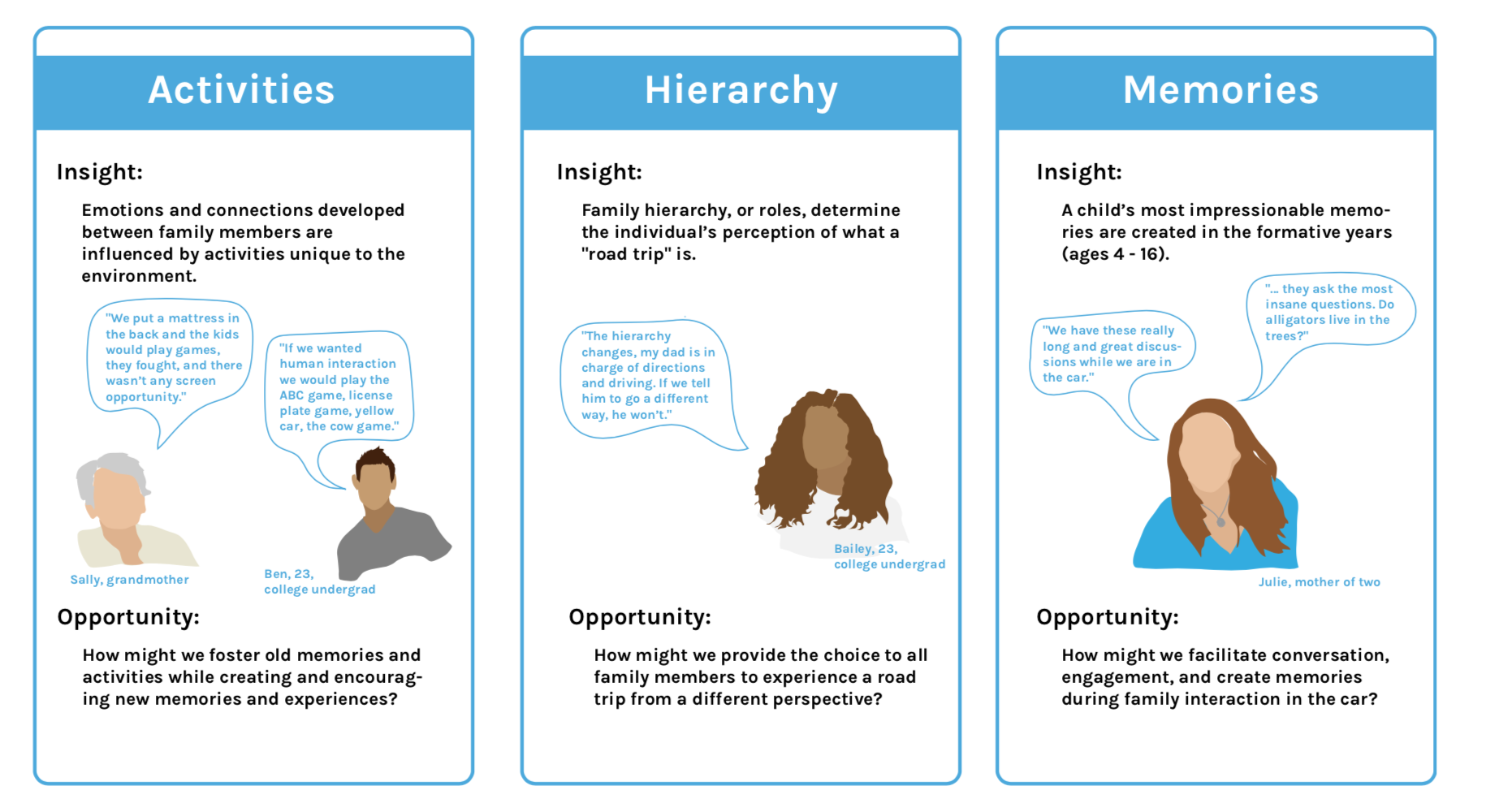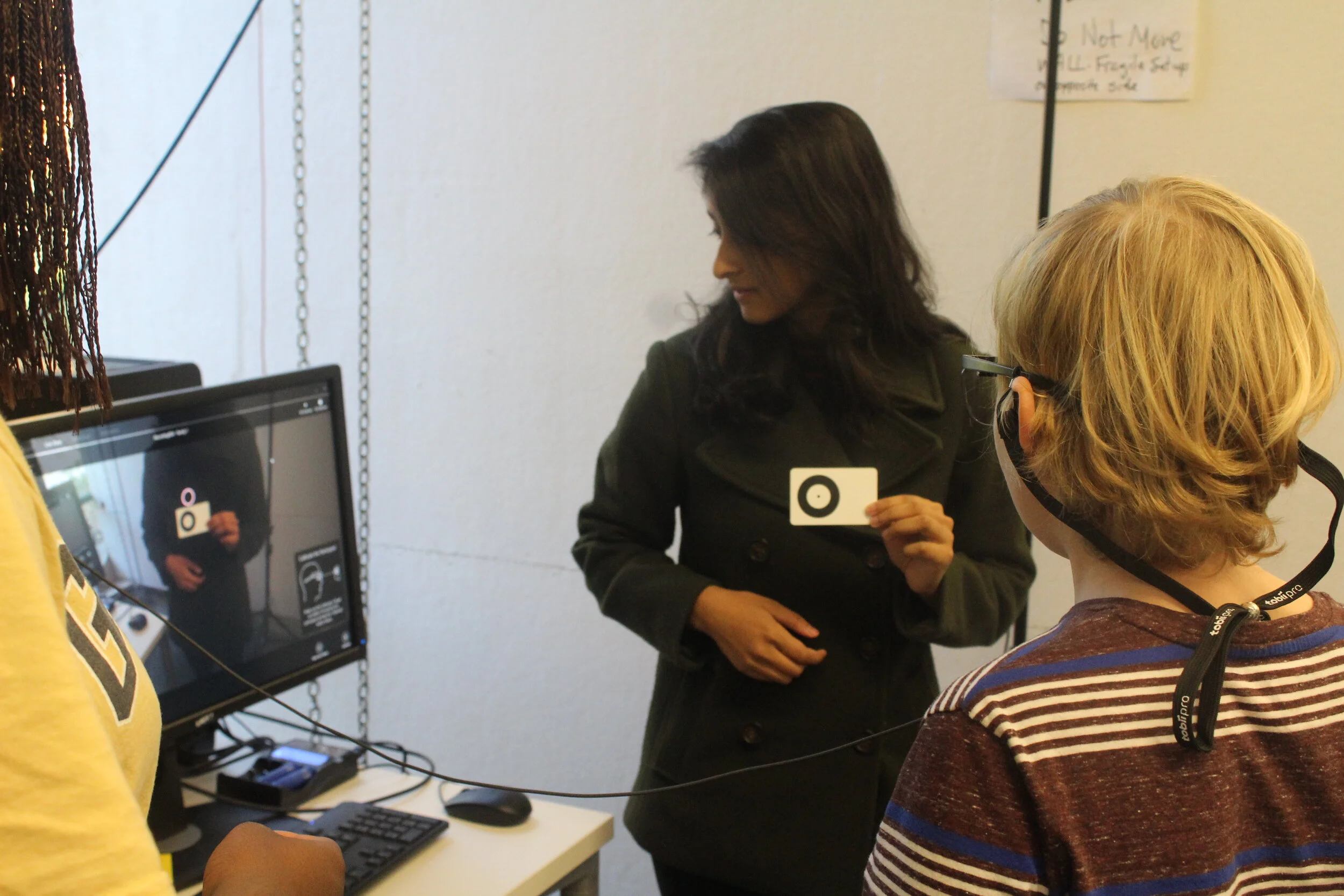
FAMILY ROAD TRIP UI
Family Road Trip UI
UX Research; UX Design; User Testing

Charlie UI
Enhancing family car interactions through augmented reality.
DURATION
9 Weeks
ROLES & RESPONSIBILITIES
Mechanical Specifications, Gantt Chart, House of Quality
Filming & editing ethnographic video + needfinding research
User & usability testing & analysis
Documentation & reports
*Details under NDA — not all details are shown.
PROJECT TYPE
Sponsored by Georgia Tech’s Human-Machine Interaction Lab (HMI Lab)
TEAM
Samira - MechE/ID
Beatrice - MechE
Iris - MechE
Abigail - ID
Jordan - ID
GOAL: With the advent of autonomous cars, new opportunities arise during family road trip experiences. Using the HMI lab’s AT&T car frame and 64-bit OLED screen, we sought to create new experiences for families in the car through interfaces on the window and windshield.
Enhances the family road trip experience through augmented reality car windshield & windows — mitigating pain points & encouraging family engagement.
Needfinding
UNDERSTANDING ROAD TRIP PAIN POINTS & FRUSTRATIONS







Prototyping
Interactive Screen Placement
The development of our individual interface system on a 64-bit OLED screen combines learning and the outside environment to keep young passengers engaged & to mitigate pain points during long family road trips.
A screen cap of one of our many prototypes that we designed and tested.
Testing

Testing with Eye-Tracking Goggles
Pictured left, Samira is calibrating the Tobii Eye Tracking goggles on one of the users, Andes, before he engages with the interface over the course of a simulated road trip. The collected eye tracking data will output information on the user’s focal points & interaction with the family.









outcomes
While the interactive system was a satisfactory mitigator for common road trip pain points by keeping backseat passengers engaged, our understanding and implementation was far from perfect. Engagement between all members of the family was not significantly increased as we observed through the heat maps from the Eye-tracking data and from qualitative observations. Potential future modifications to our testing would be:
Increased number of OLED screens. Our road trip simulations would have been more realistic if OLED screens were present on both rear windows and the heads up display. However, due to budgetary constraints, we were not able to do this.
Longer testing intervals. To accurately simulate a road trip, we would need longer tests, however, our participants (parents and children) were often not able to be present for more than 1 hour in the lab.
Our research and development will be continued at Georgia Tech’s Human Machine Interaction lab.